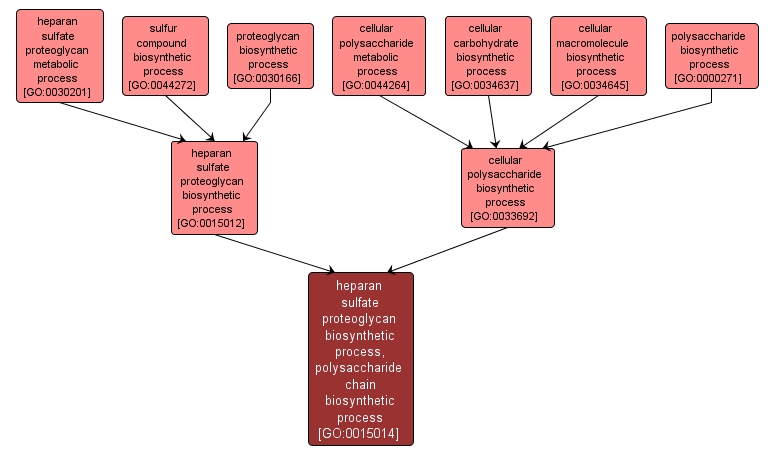GO TERM SUMMARY
|
| Name: |
heparan sulfate proteoglycan biosynthetic process, polysaccharide chain biosynthetic process |
| Acc: |
GO:0015014 |
| Aspect: |
Biological Process |
| Desc: |
The chemical reactions and pathways resulting in the formation of polysaccharide chain component of heparan sulfate proteoglycan. |
Synonyms:
- heparan sulphate proteoglycan biosynthesis, polysaccharide chain biosynthetic process
- heparan sulphate proteoglycan biosynthesis, polysaccharide chain biosynthesis
- heparan sulfate proteoglycan formation, polysaccharide chain formation
- heparin proteoglycan biosynthetic process, polysaccharide chain biosynthetic process
- heparan sulfate proteoglycan anabolism, polysaccharide chain anabolism
- heparan sulfate proteoglycan chain elongation
- heparan sulfate proteoglycan formation, polysaccharide chain biosynthesis
- heparan sulfate proteoglycan synthesis, polysaccharide chain synthesis
|
|

|
INTERACTIVE GO GRAPH
|














